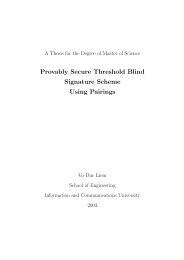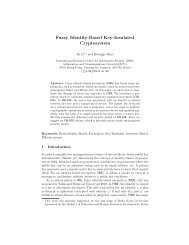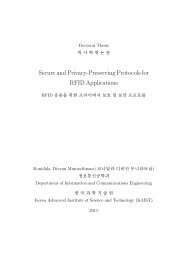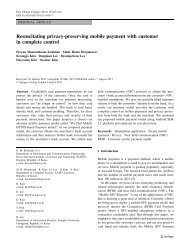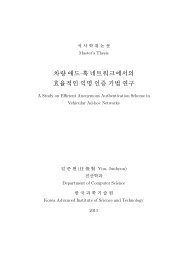RFID-enabled Extensible Authentication Framework and Its ...
RFID-enabled Extensible Authentication Framework and Its ...
RFID-enabled Extensible Authentication Framework and Its ...
You also want an ePaper? Increase the reach of your titles
YUMPU automatically turns print PDFs into web optimized ePapers that Google loves.
Table 3.1: Code Field<br />
0 Initiation<br />
1 Request<br />
2 Response<br />
3 Notification<br />
The Identifier field is the same as the EAP Identifier field except<br />
the length. Because this field has no cryptographic meaning, 6-bit long<br />
Identifier is enough to match Response packets with Request packets.<br />
The Length field is the packet length in octets. This means the<br />
length of packet cannot exceed 255 bytes, which is long enough to be<br />
used for <strong>RFID</strong> applications.<br />
Table 3.2: Type Field<br />
0 Identity (Null authentication)<br />
1 Nak (Response only)<br />
2 Success (Notification only)<br />
3 Failure (Notification only)<br />
4 – 127 St<strong>and</strong>ard Types<br />
128 – 65535 Vendor-specific Types<br />
An 16-bit Type field value (Table 3.2) is selected among 65536 values<br />
corresponding to the Code field. Identity is used for null authentica-<br />
tion, which requests the Identity of tags but not authenticates them or<br />
which can be used with another authentication method. Nak is a type<br />
for authentication negotiation when a received Type of Request is not<br />
supported by a tag. Success or Failure notify whether a performed<br />
21



